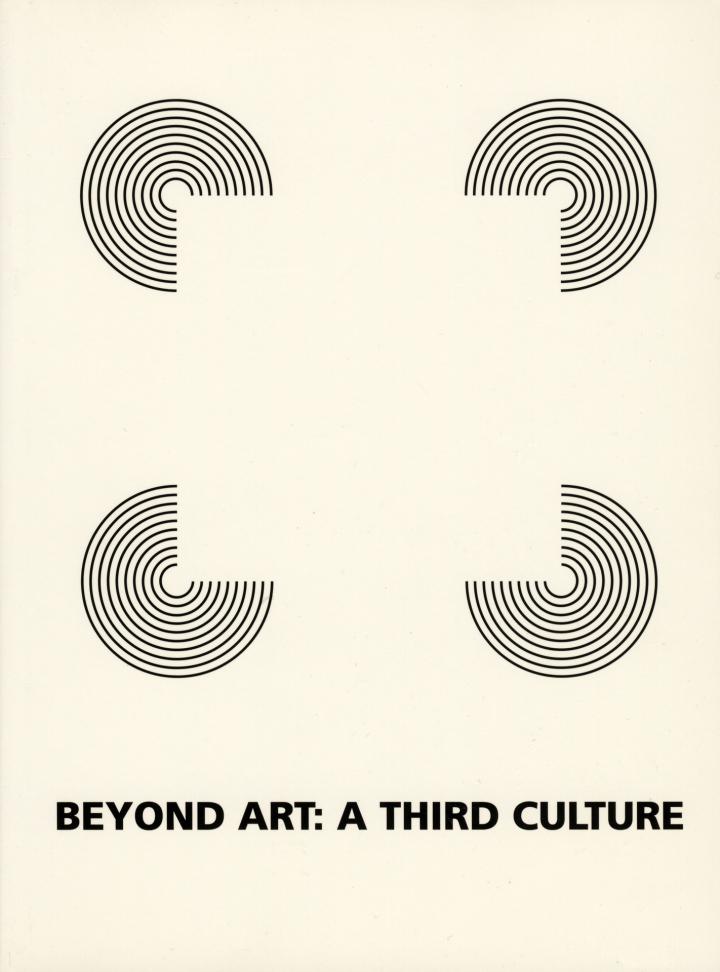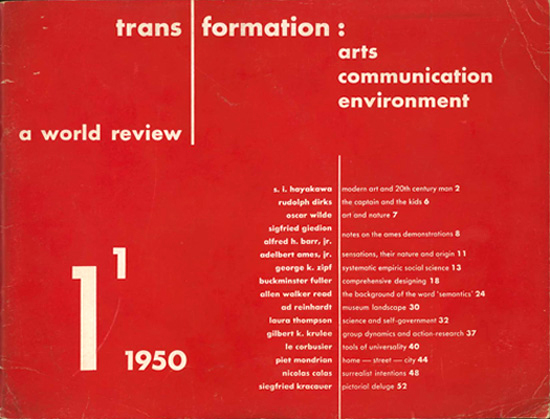Peter Weibel (ed.): Beyond Art: A Third Culture. A Comparative Study in Cultures, Art and Science in 20th Century Austria and Hungary (2005)
Filed under book | Tags: · art, art and science, art history, austria, computer art, conceptual art, cybernetics, history of science, hungary, mathematics, media art, philosophy, psychoanalysis, technology

“Austria and Hungary in the 20th century were nations that made enormous achievements in the formal sciences and arts: abstraction, logic, mathematics, physics, positivism, psychoanalysis, cybernetics, constructivism, economics, art, media art, and concept art. Art and science are usually divided into two different cultures, and nations, too, are seen as having separate ones. This book delivers a new model of consilience and convergence of art and science by closely studying in a material historical way by using a multitude of original papers and contributions, photographs, documents, bibliographies, biographies, and survey essays, the mutual influence of art and science in Austria and Hungary. In fields ranging from Gestalt psychology to Quantum physics, from constructivism to theories of vision, from holography to cyberspace, we discover a multitude of ideas, books, movements and personalities that have deeply influenced the world. Richly illustrated, the book is a nearly invaluable sourcebook, in which a new method, resembling more a CD-ROM narration than a dictionary, has been used to map an unknown horizon of knowledge. Those involved in the history of science or art and in the field of cultural theory, will find an incomparable frame of reference and information. They will discover not only genius, talents and themes they have not been aware of, but also a new model of culture, a third culture. The book is graphically and structurally user-friendly with a synopsis for each chapter, models, diagrams, images, corolaries and index etc.”
Publisher Springer, Vienna, 2005
ISBN 3211245626, 9783211245620
616 pages
PDF (40 MB, updated on 2019-10-30)
Comments (2)Siân Ede: Art and Science (2005)
Filed under book | Tags: · art, art and science, contemporary art

“While demonstrating how science is affecting the creation and interpretation of contemporary art, this book proposes that artistic insights are as important on their own terms as those in science and that we can and should accommodate both forms of knowledge. Featuring the work of artists such as Damien Hirst, Christine Borland, Bill Viola and Helen Chadwick, and art-science collaborative ventures involving Dorothy Cross, Eduardo Kac and Stelarc, it looks at the way new scientific explanations for the nature of human consciousness can influence our interpretation of art, at the squeamish interventions being produced by artists relishing in new technologies and at art which takes on the dangers facing the fragile environment.”
Publisher I.B.Tauris, 2005
ISBN 1850435847, 9781850435846
216 pages
Keywords and phrases
Steven Pinker, Richard Deacon, Stelarc, Richard Gregory, Susan Derges, Martin Kemp, evolutionary psychologists, Wellcome Trust, Richard Wentworth, Richard Dawkins, Steven Rose, Calouste Gulbenkian Foundation, Antonio Damasio, Nicholson Baker, Daniel Dennett, Andy Goldsworthy, Marcus du Sautoy, Damien Hirst, qualia, Jo Shapcott
PDF (updated on 2015-4-4)
Comments (2)Trans/Formation: Arts, Communication, Environment, 1 (1950)
Filed under magazine | Tags: · art, art and science, technology

A multi-disciplinary journal which affirmed that “art, science, technology are interacting components of the total human enterprise…” This publication, which existed for only three issues, treated the arts and sciences “as a continuum.”
Edited by Harry Holtzman
Publisher Wittenborn Schultz, New York, 1950
64 pages
via PublicCollectors.org
PDF (27 MB)
Comment (0)
